If you wish to recreate that 1950’s guitar sound in your home studio the first thing you need to do is understand the entire signal chain, it might sound a little complicated but it is definitely doable.
First of all electric guitars became popular in the 1950’s as part of the pop music culture but remember that they were not invented in this era.
These 3 names were well known then and continue to play big today, Fender, Gretsch, and Gibson. There is one thing though you need to stay away from if you wish to achieve that 1950’s feel the humbuckers pick up variety.
Find out more here: https://theproaudiofiles.com/how-to-get-1950s-guitar-tones/
Home Recording Equipment
MusicTech's Best Microphones For 2016
In the recently released issue of MusicTech magazine entitled Gear of the Year, they break down the best gear for 2016. Among these here are two of the best microphones topping the year.
Receiving MusicTech Magazines Silver Award and the Most Recommended Microphone:
The Shure KSM8 This low-end build microphone seems to be getting attention by delivering a boomy vocal.
The Winner and the recipient of The Gold Award Winner and 2016’s Best Microphone:
The Audio Technica AE2300 a very dynamic microphone being able to cover guitar cabinets, brass, and percussion. All three works well with the AE2300 making it top our list for 2016
Read more details here: http://www.musictech.net/2016/12/goty-6-microphone/
Ultimate Christmas Gift Guide For Musicians and Engineers
Having a hard time thinking of the perfect gift for a DJ friend? Running out of ideas on what to give the sound engineer in the family? Everyone wants a fuss free holiday so here’s our gift guide for all the music lovers out there.
Read more about this here: http://bobbyowsinskiblog.com/2016/12/15/christmas-gifts/
What Are The Different Types of Microphones?
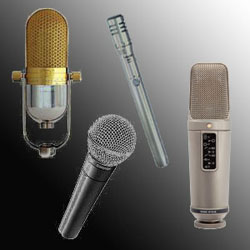 Bringing this post to the top of the pile since it is more relevant than ever.
Bringing this post to the top of the pile since it is more relevant than ever.
What are the different types of microphones? Good question. There are three main types of microphone, each with different characteristics that can be used in different situations.
Knowing the differences can really help you make better decisions about how to capture the best audio, whether for recording or for live performances. These three types of mic are: dynamic, condenser and ribbon.
Dynamic Microphones
Dynamic mics are the work-horses of the audio world. They are made using a simple design, and have very few moving parts. Because of this, they’re fairly sturdy and can handle some rough-housing. It uses a wire coil and a magnet in order to create the audio signal.
Dynamic microphones are best suited for handling fairly high volume levels, such as electric amplifiers or drums. They don’t require any external power or batteries and they have no internal amplifier.
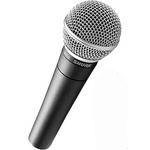
Because of all the stuff just mentioned, dynamic mics are almost always what you would use for live performance. Such examples as the Shure SM58, often used for live vocals, and the Shure SM57, often used for drums and electric guitar amps, are stalwarts of the live performance stage.
Condenser Microphones
What is a condenser mic? What does it “condense?” Indulge my boring tech-geek description for just a second here. “Condenser” is another name for capacitor, which is an electronic component that stores energy. You won’t hear the word condenser used much anymore, except when talking about microphones.
Condenser microphones use a capacitor (a thing that stores electricity) to convert acoustic energy (things wiggling back and forth) into electric energy (electrons zipping around inside some wires).
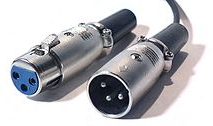
Okay, so what is a condenser mic? Unlike dynamic microphones, condensers need power either from a battery or an external source. Since they are typically more responsive and sensitive than dynamics, they are very well suited for capturing delicate nuances and so are well-suited for recording purposes. They are not typically recommended for high-volume work, as they can be prone to distort due to their sensitivity, so you won’t see them on stage very often.

To hook up this type of mic to your computer, you will need an audio interface, such as the Avid Fast Track, which has the right kind of connector for standard mics (the 3-pin “XLR” connector). These interface boxes usually plug into your computer via USB.

There are two types of condenser microphones: large diaphragm condensers (LDC) and small diaphragm condensers. Besides the obvious size difference, the large variety tends to be more sensitive, and produces less self-noise. LDCs are THE recommended mic for recording voices. They are also often used for acoustic guitars, drum overheads, pianos, and any situation where you need a lot of sensitivity in a recording. The LDC mic I use most often is the Rode NT2-A. A commonly used example on the less expensive end of the spectrum would include the Audio. Another very commonly used and high quality LDC is the Audio-Technica AT2020 for about $99. And starting to get into the “I-wish-I-could-afford-on-of-these” category is a favorite in studios recording vocals for both music and voice-over purposes, the Neumann TLM 103. To quote from Wayne’s World, one day “it will be mine…oh yes, it will be mine.”
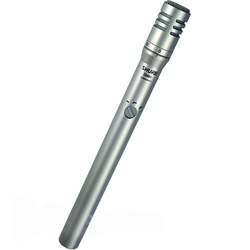
Small diaphragm condensers offer a smaller area of pickup since the diaphragm is smaller. But another difference in the smaller diaphragm is that it can react faster to changes in sound than an LDC. This quality makes the SDC ideal for things like acoustic guitar because it can pick up more details in the player’s style. Two excellent examples of common SDCs are the Rode NT5 and the Shure SM81.
Ribbon Microphones
Ribbon microphones are considered by some to be the most natural sounding microphones ever made. They use a type of aluminum called duraluminum (the “ribbon) that is placed between the poles of a magnet in order to produce voltages. The ribbon is very thin and allows the mic to respond to sound very quickly. Their pickup pattern is usually bidirectional, which means they pick up all sounds from both sides of the microphone equally in a figure-8 pattern (see our article on microphone polar patterns for more on that).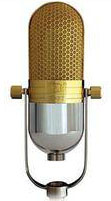
Ribbon mics are most commonly, and historically used on voices. They are also often used for pianos, guitar amplifiers, horns and upright bass. They are among the first microphones that were ever manufactured and have quite a long history. There has been a renewed interest in ribbon microphones the past few years because they are among the best quality for home recording. Because of this you may find ribbon mics to be more expensive than other type on average.
Examples of modern ribbon mics include the Royer R-121 and the MXL R77.
So there you have it – a summary of the basic different types of microphone. Use this knowledge for good.
Cheers,
Ken

Mojave Audio MA-1000 Microphone, Must Try High End Condenser Mic
Now part of a new signature series, the MA-1000 uses an original new old-stock 5840 tube, a 1 inch 3 microns thin 251-style capsule, and a custom-designed transformer giving you that old Austrian/German vibe.
The mic gives you that same sound you get from classic large diaphragm condenser mics but in a more affordable price.
Read more about this here: http://bobbyowsinskiblog.com/2016/12/12/mojave-audio-ma-1000-microphone/